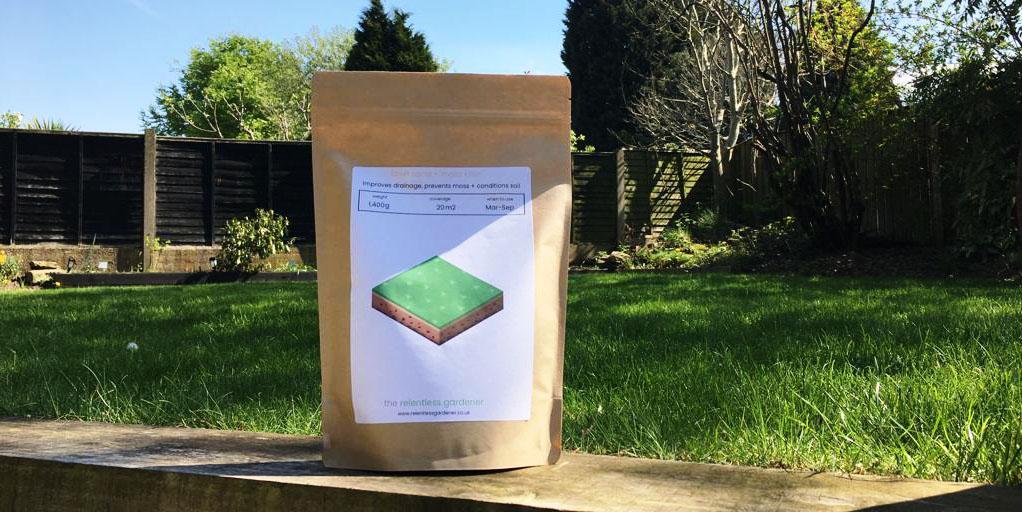
Created By
Matt Adams
Updated On
- March 1, 2024
Get FREE Exclusive Access
Keep your lawn pristine with exclusive tips, offers and insights that I only share with my private subscribers.
Latest Posts
Lawn Sand – What, Why, When & How to apply
- By Matt Adams
- March 1, 2024
Jump to
Get FREE Exclusive Access
Keep your lawn pristine with exclusive tips, offers and insights that I only share with my private subscribers.
It’s easy to get confused between the different types of lawn sand.
Some have chemicals in them and can only be used during the growing season. Others are naturally occurring and can be used any time of year.
If you’re going to apply any of them to your lawn, you should definitely know the difference.
So, in this post I’m sharing with you the best types of sand products that will give your grass a great needed boost either in Spring, Autumn or both. I’ll explain why you need them. And just as important, when you shouldn’t use each of them or at least need to be cautious.
I’ll also give you some key tips on when and how to apply.
For minimum effort, maximum results!
But first, here’s the number one reason for using sand on your lawn
Using Sand can cure a recurring moss problem in your lawn
By following the below process, you’ll be able to significantly reduce the amount of moss that comes back year-after-year. Especially if your grass is in the shade and you have dense clay-type soil.
Here are the steps I took to combat my own moss problem –
- Apply Lawn Sand +Fe at 70g per m2 in Feb
- Apply moss killer at 4g per m2 in early march
- Scarify deeply in two different directions a few days after the moss turns black
- Aerate the soil with a mechanical aerator
- Apply Signature Spring/Summer Lawn Feed at 30g per m2
- Apply Premium Shade Grass Seed at 25g per m2
- Apply Organic Base Sand at a rate of 3kg per m2
- Wait 6 weeks and apply Lawn Sand +Fe again (don’t do this during a drought)
Note it’s the application of base sand that really does the trick agains the repeating moss problem.
Of course, you could just get rid of the moss with iron sulphate but that’s only going to scratch the surface and you’ll find you need to do it every year to get your grass looking sharp again.
types of lawn sand
-
- Out of Stock
100% Organic Base Sand for Levelling & Dressing Lawns
- £0.31 - £1.10 / per m2
- Read more
-
-
Lawn Sand + Moss Killer + Weed Suppressant
- £0.14 - £0.70 / per m2
- Select options
Option 1: Lawn Sand as a fertiliser with added Nitrogen and Iron (Moss Killer)
Note: This is NOT to be confused for a top dressing. That’s because it contains chemicals.
So, what is it and why use it?
It’s a sand based chemical fertiliser that will add the nutrients to a lawn with dense soil, while improving drainage. It also contains iron, which is designed to suppress moss. It won’t cure a stubborn moss problem but with regular applications, it will suppress moss, That means MUCH less work for you year on year – BOOYA!
The small amount of nitrogen will also not replace your seasonal feeds, but it will give the lawn a nice boost of growth and green it up.
The sand itself will help with drainage, especially if you do some hollow-tine aeration beforehand. That’s because the granules will get into the holes and make sure the drainage is there for longer.
When should you use it?
During Spring or Autumn when moss is actively growing…
Some lawn enthusiasts simply SWEAR by this type of lawn sand and will apply it every 4 weeks in the Spring & Summer. I’m not saying you need to go that far but if your garden is in the shade or is damp and wet – this lawn sand is may just help you combat a moss problem once and for all.
If your grass is in a dense clay soil, damp area with little drainage or a shady part of your garden, lawn sand with nitrogen and Iron will go a long way to helping you keep your lawn looking great.
Mainly because moss LOVES all the above but hates sandy soil and iron, so keep the grass strong and it will outcompete everything else.
Alternatively apply it once in EITHER Spring our Autumn. Even using it once a year will give you huge benefit.
Don’t use it after an overseed renovation project because the iron is not good for the new seed. Remember though, iron is a chemical and therefore too much of it can negatively affect the soil. The perfect reason to use normal sand as a top dressing where possible – more on this below.
Also, in my experience it’s best to apply it on a dry day because it will spread a lot easier. Wet granules can get into clumps and cause small bumps.
How should you apply it?
The good thing is you only need a little bit (compared to the ones mentioned below).
Use 70g per m2 of Lawn Sand + moss killer for optimum results.
That means you can either apply it by spreader or by hand. It also means you can buy it online and don’t need to pay na arm and a leg for shipping – like with most other bulk bags of garden stuff.
Option 2: Organic Specialist Sand as a Lawn Top Dressing
This is the option chosen by many golf courses.
Why? Because it will give you a super flat surface for your lawn to grow on. That’s not the only benefit though, let’s discuss.
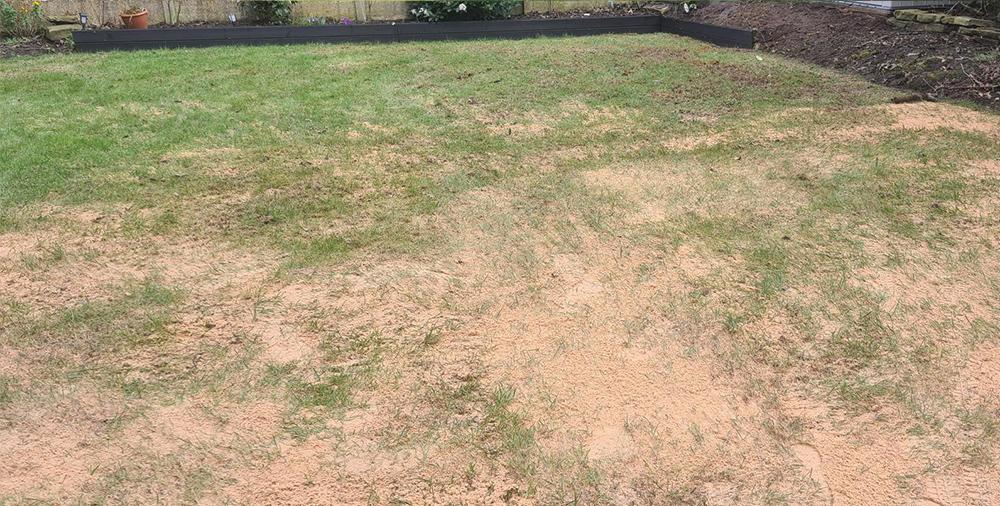
Why should you use just sand as a top dressing?
One of the biggest reasons is to level any low points in the ground and improve drainage on a dense soil base. Over time, the soil will be conditioned meaning your grass will have a better chance of survival.
It’s 100% organic and therefore perfectly safe to apply when there are pets and children around. Not only that, it’s also fairly easy to spreaad and does a great job of working its way through a thick lawn into the soil.
Although it won’t contain added iron, it will indirectly help you avoid moss from creeping in. That’s because moss hates sandy soils.
Don’t get confused though, when it comes to sand, there are loads on the market for loads of uses. From building to sharp or even children’s play sand.
So, that begs the question…
What type of ‘just sand’ should you apply on your lawn?
You need to be careful here because using the wrong type will negatively affect your grass. What you don’t want to do is infect the soil with any disease.
Therefore, it’s important to buy a ‘washed’ sand.
The most common type is known as silica sand. It’s also known as Silver Sand. Either way, it should be free of chemicals and say ‘suitable as a top dressing’ on any product you choose to buy.
When should you use ‘Just Sand’
You can use it any time of year because ti doesn’t contain any type of chemicals. However, I usually recommend applying it after doing an overseed. Partly because it will help the seed make its way down to the soil bed. Otherwise you can apply it whenever you want.
How to apply ‘organic specialist sand’ to your lawn
Simply apply by hand (or bucket) and then sweep it across the ground. Aim to fill any low points with the sand to level it out if it’s bumpy. Alternatively, you could use a top dressing roller, which will give you a nice even spread right across the area,
However you apply, the main aim to avoid having any unsightly blobs of sand when you’ve finished.
Option 3: 70/30 Sand/Soil Top Dressing
Basically, 70/30 means 70% and 30%. A mix of sand and top soil. It’s nothing more than that, it doesn’t contain chemicals and it won’t kill moss. Remember though, moss doesn’t like sandy conditions so it will help to prevent it but it’s not specifically designed to do that.
You can usually buy this mix in either 25KG bags or 500KG to 1,000KG Pallets.
So, why should you use a 70/30 mix
There are so many benefits when applying this as a top dressing. Firstly it will create the much needed drainage your grass desires. Especially if you aerate first. It will also reduce the density of a clay soil as the sand works its way into the main soil bed over the coming weeks.
When used after overseeding it will MASSIVELY improve the seed-to-soil contact. Meaning it will MASSIVELY increase germination rate of your seed.
It’s perfect for use in an area that gets BOGGY. That’s because it helps to absorb the water and allow the grass to thrive.
Finally, you can also use it for patch repair
When should you use it?
After overseeding..
Applying 70/30 will hugely improve seed to soil contact. By improving drainage it will give the seed a much better chance of surviving and thriving in its early growth stage.
Try to keep the mix dry before applying and apply it on a dry day because it will make it loads easier to spread evenly across the lawn.
Or just as a soil conditioner in the Spring & Autumn…
If you’re not overseding, no worries. You can apply this mix any time you want. Most often it’s done during Spring and again during Autumn. It really depends on how much you choose to use. More on that below.
How should you apply it?
There are a number of approaches tried and tested by many for applying a 70/30 top dressing. Some traditional and some quite innovative.
Firstly there’s the traditional broom. Here you would simply drop it down in clumps and then sweep it out as evenly as possible.
Then there’s the professional lawn leveller – these come in a multitude of sizes from small to large and even ones that attach to a tractor.
Finally, there’s the cheap cheerful but brilliantly innovative, attach a piece of string to a pallet and pull it across the lawn. I actually tried this method when I seeded fro scratch to level the soil and it worked extremely well. At that point I didn’t have a lawn leveller.
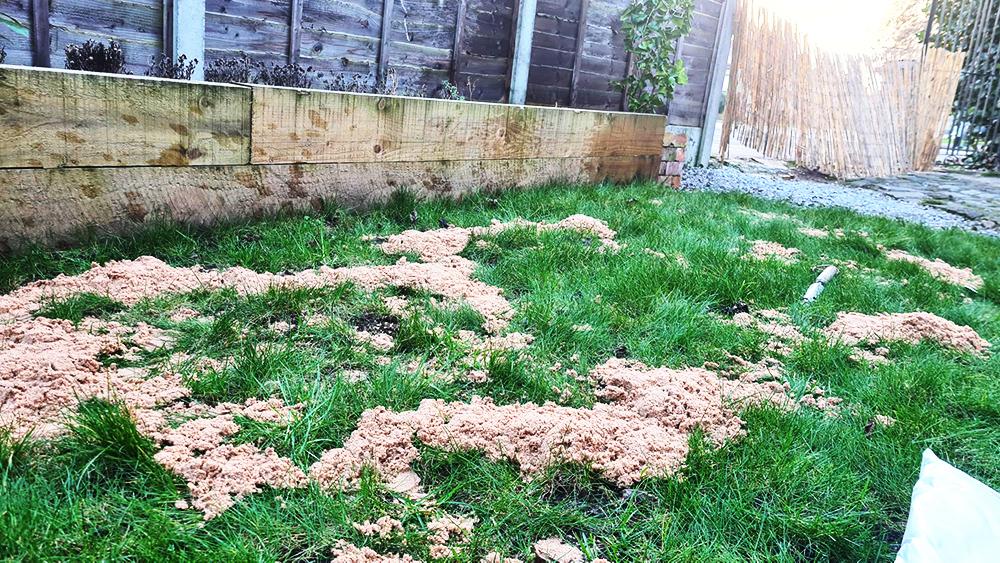
Finally, what problems can occur with using sand on your lawn
Remember that sand itself doesn’t improve the nutritional value of the soil, so even if you do apply it, you still need to use our professional grade fertilisers in the form of a full year’s care programme.
What’s more, if too much is applied it can stop the grass from getting the nutrients it needs to be able to thrive in the competitive world of weeds and moss.
As such and as it is an abrasive substance, you could experience problems if you don’t apply it evenly.
SOme people swear by using lawn sand twice a year. Others say it can harm your grass if care isn’t taken at every turn.
Ultimately, the best thing to do is ‘go easy’. Never apply too much in one go and choose a specially formulated lawn sand with moss killer for moss prevention and drainage or a soil mix instead of ‘just sand’ where possible where you need a top dressing.

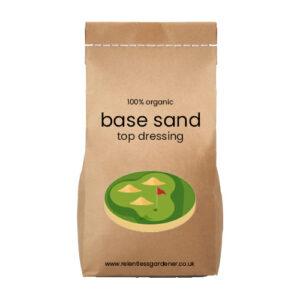
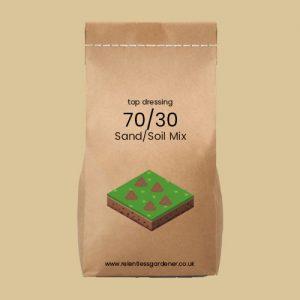
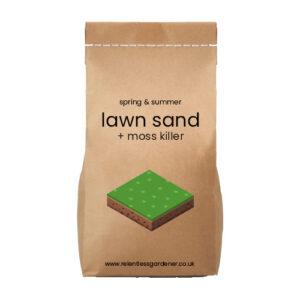
This Post Has 13 Comments
Hello, I am just wondering, how long should you avoid walking a grass after sanding.
Hi Elbin,
The sand should disappear into the soil so you’re fine to walk on the area after application. Just try to make sure there’s no sand on your shoes afterwards as it can discolour hard surfaces if transferred to them. Cheers, Matt
My lawn gets very wet along by my garden wall in winter, doesn’t get any sun,also thins out compared to the rest of the lawn, should I put sand along by the wall and reseed. .
My lawn gets very wet along by my garden wall in winter, doesn’t get any sun,also thins out compared to the rest of the lawn, should I put sand along by the wall and resend.
Sure, sand is good idea as it will help with drainage.
I want to repair dead spots in my lawn, I was told using sand could help those areas grow in. What type of sand and does it matter the time of year? I’m in Georgia and it’s October timeframe.
Hi Nikko,
You’ll want to use specialist base sand for lawns. Cheers, Matt
How long should you wait to overseed after using lawn sand?
You should wait a minimum of a week so the iron sulphate can wash into the soil.
I HAVE RECENTLY APPLY MY AUTUMN FEED SHOULD I NOW USE THE LAWN SAND
Would it be in order to prepare the autumn lawn (cut, rake moss and pick up leaves, aerate) and apply Autumn feed and week and lawn sand? If so do I have to leave time between feed/weed and sand application. Also will a further Autumn lawn feed be necessary? Many thanks
I want to use lawn sand and over seed my lawn, which do I use first. It’s now Wednesday 30th August and rain is due Saturday 3rd September, regards Jim
Hi Jim,
If you want to use lawn sand, you should wait more than 6 weeks after overseeding to apply it because it contains iron. Alternatively, use a 70/30 sand/soil mix or top soil, which is 100% natural.